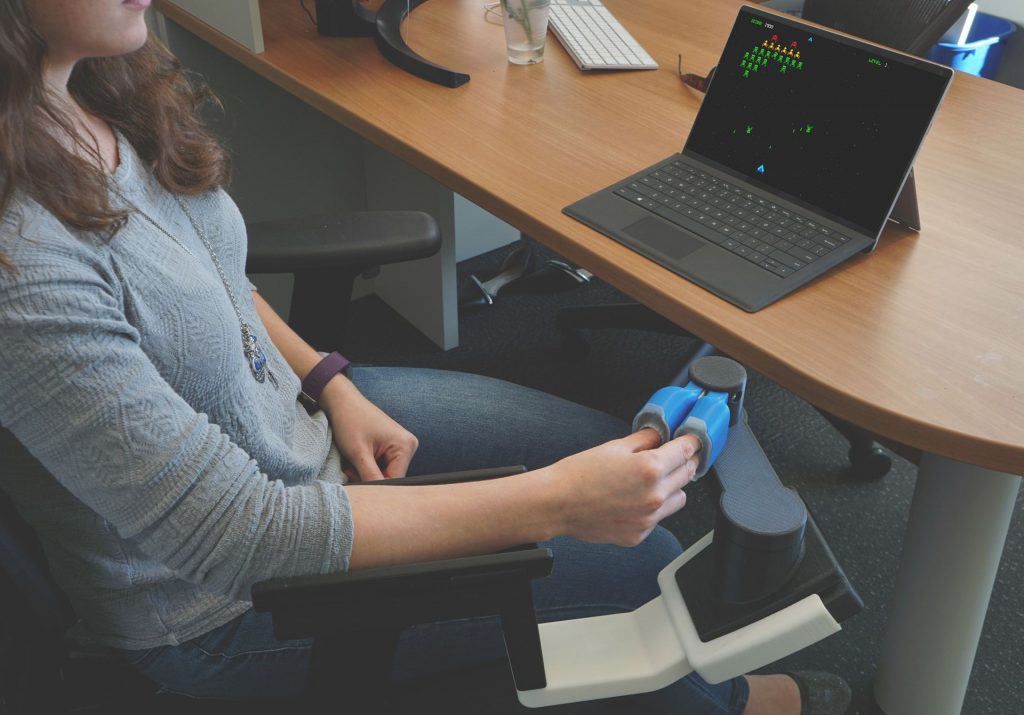W.W. Caruth Jr. Foundation Funds Revolutionary Therapy for Brain Injuries, Neurological Disorders
By: Jill Blevins | October 20, 2017


Our nervous systems control everything we think, do, feel and remember. But a single interruption to that system — whether through a car accident, stroke, concussion or disease — could result in a loss of independence in our lives.
Imagine one day living in a world where people who have experienced neurological injuries can return to normal, healthy and productive lives. Thanks to partners like the W. W. Caruth Jr. Foundation at Communities Foundation of Texas, researchers at the Texas Biomedical Device Center (TxBDC) at The University of Texas at Dallas are transforming this vision into a reality.
In 2016, the Caruth Foundation awarded the TxBDC a $2 million gift — the initial investment of a multi- year project — to develop and test new biomedicaltechnologies aimed toward treating patients with spinal cord injury.
“We are developing new therapies that can help patients recover motor function to improve the quality of their life,” said Dr. Rob Rennaker, executive director of the center, Texas Instruments Distinguished Chair in Bioengineering and the department head for bioengineering. “In order to make these solutions available to the masses, we focus on developing technologies that are not only highly effective, but affordable.”
Neuroplasticity — or brain plasticity — is the brain’s ability to change or “rewire” itself based on experiences. Without this ability to change, humans would be unable to learn new information or recover from brain injuries. Plasticity is critically involved in all forms of learning, including recovery of function after a neurological injury. Dr. Michael Kilgard, associate director of the TxBDC and Margaret Fonde Jonsson Professor in the School of Behavioral and Brain Sciences, discovered that whenelectrically activated, the vagus nerve releases chemicals in the brain that enhance learning. This therapy, known as Targeted Plasticity Therapy (TPT), rewires neural pathways around the injured parts of the brain, spine and peripheral nerves. TPT works by electrically activating the vagus nerve at very specific points during rehabilitation movements.

With the Caruth Foundation investment, the TxBDC team developed the RePlay system to monitor hand movements during rehabilitation and automaticallyactivate the vagus nerve when specific movements occur. The system incorporates three components: ReStore, a wireless stimulator that is placed in a cuff and attached to the vagus nerve located in the neck; a ReLay device worn around the neck to wirelessly power the implanted ReStore device; and four controllers designed to isolate specific hand movements during rehabilitation. These same controllers are used to play video games, creating an enjoyable experience for patients while simultaneously using TPT to
radically enhance recovery from neurological injuries.
“We stand at the cusp of revolution in the treatment of neurological injury and disease,” Rennaker said. “TPT has the potential to not only recover motor and sensory function, but could be used to treat learning disabilities such as autism and memory loss associated with aging and other cognitive deficits. With the gift from the Caruth Foundation, we can now fully explore the potential of TPT to improve the lives of spinal cord injured individuals and others.”
The next phase of foundation funding will allow the TxBDC to run clinical trials.
“The Caruth Foundation encourages nonprofits to be bold and push boundaries as they work to solve complex issues in our three areas of focus — education, public safety and medical research,” said Monica Smith, chief relationship office at Communities Foundation of Texas. “We were thrilled to see UT Dallas bring a project to us that could dramatically improve the quality of life for thousands of individuals across the country who currently have limited treatment options for debilitating neurological conditions.”
